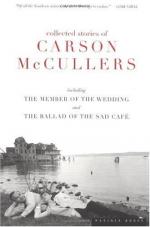|
This section contains 846 words (approx. 3 pages at 300 words per page) |

|
When one reads the novella [The Ballad of the Sad Café] in the understanding that the narrator is a character in the story, he notices a subtle but significant shift in the story's form and subsequent themes. Such a reader finds himself absorbed not so much with the bizarre goings-on in the old café as with the changing perceptions of a person in the process of intense introspection….
The first clue to the actual point of view is the fact that the story begins and ends in the present tense. In itself, the present tense does not a fictive narrator make. Considered in the context of the references to "here" and "now," though, the use of the present suggests a person who is describing the café "on the spot."…
To read the story in the light of this perception is to read a very different story indeed—it...
|
This section contains 846 words (approx. 3 pages at 300 words per page) |

|


